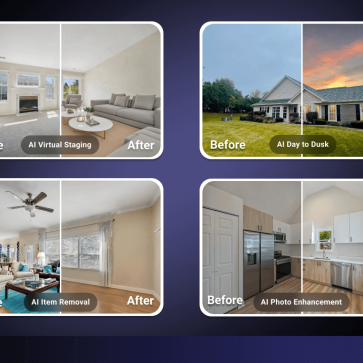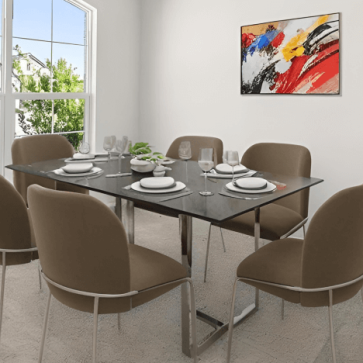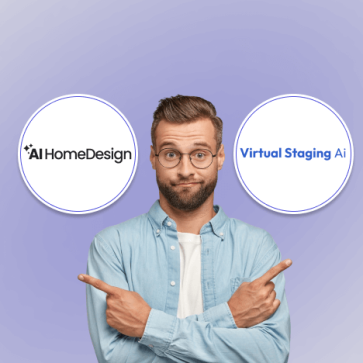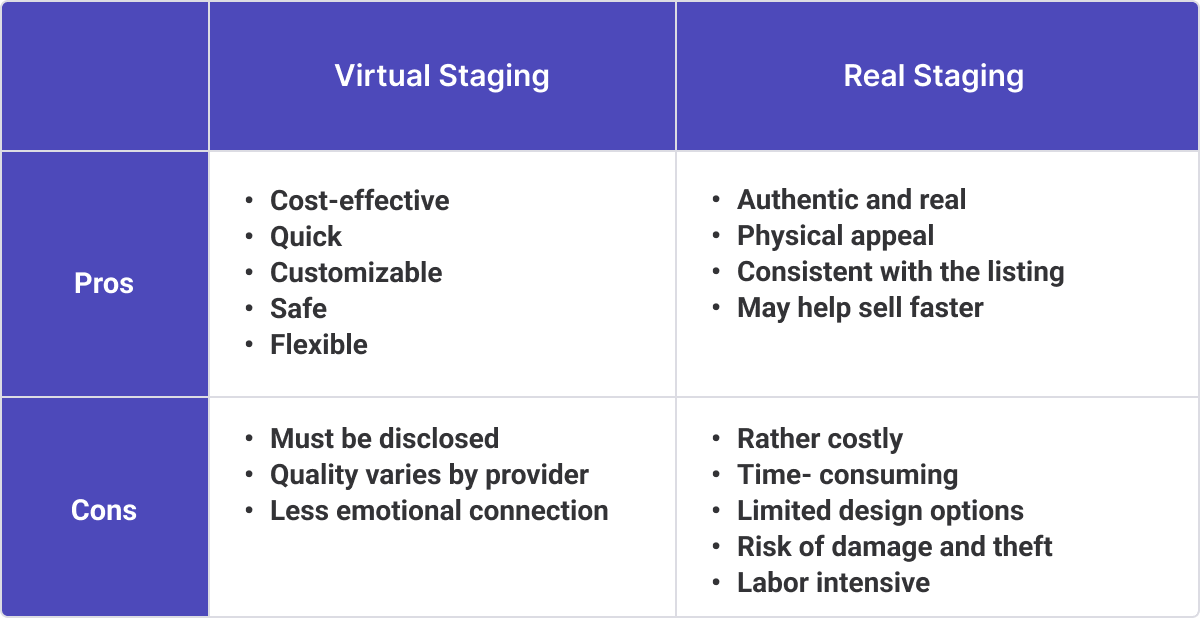
The decision between virtual and traditional staging usually depends on four factors: cost, time, property type, and market conditions.
Virtual staging typically costs $14–$75 per photo compared to $1,000–$3,500 per property for traditional staging. In high-cost markets like New York or San Francisco, traditional staging can run well above $5,000 per month, making virtual staging an even more attractive option for budget-conscious agents.
Time-wise, virtual staging delivers results in 24–48 hours, while traditional staging setup takes up to 3–7 days.
As for the type of property, luxury homes and unique architectural features often require physical staging to convey quality and allow buyers to experience the space, while standard residential properties and condos work well with virtual staging to display potential without significant investment.
This comparison breaks down the pros and cons of virtual staging vs. traditional staging to help real estate agents make the right choice for each listing.
Why Stage Homes?
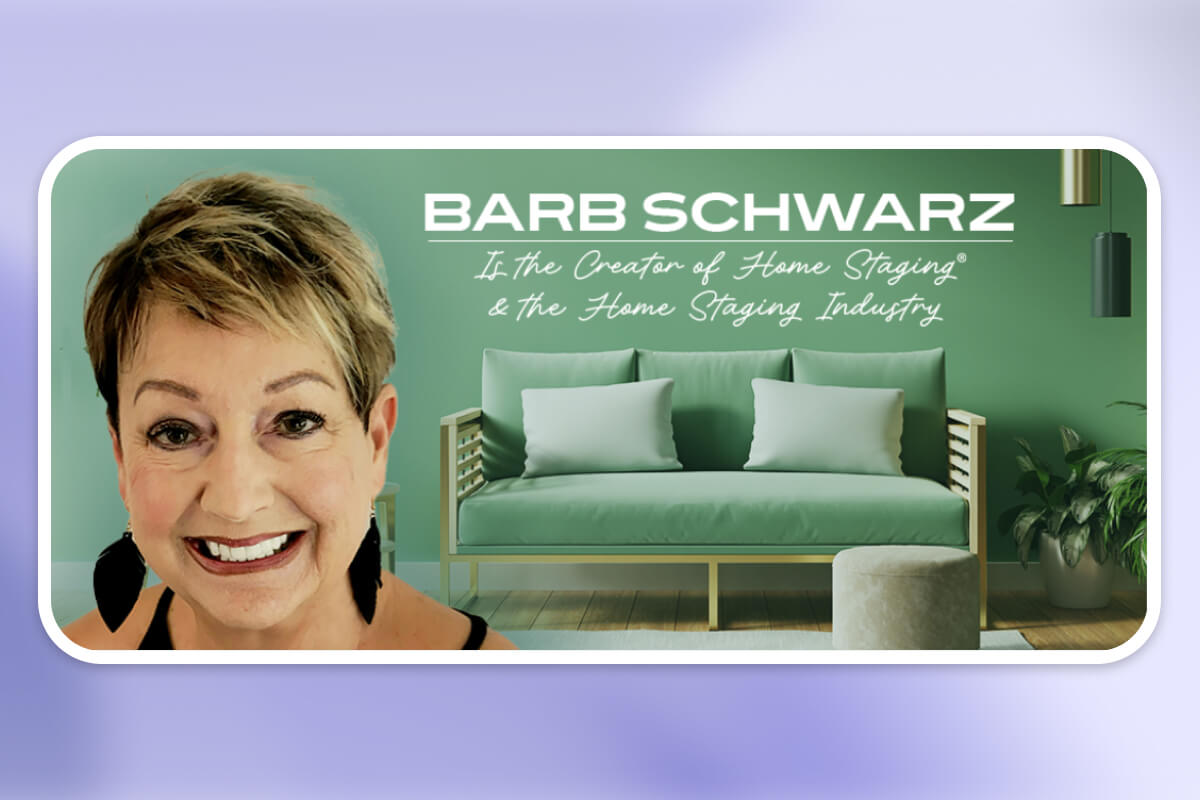
Traditional home staging, pioneered by Barb Schwarz in the 1970s, set the standard for showcasing vacant properties. For decades, this was the sole approach: renting and arranging furniture to help buyers envision a home’s possibilities.
Here are the key pros and cons of traditional home staging:
Pros of Traditional Staging:
- Authentic look and feel
- Creates strong emotional connections
- Consistency between listing photos and actual visits
- In certain markets, it helps homes sell faster
Cons of Traditional Staging:
- High costs: $1,000–$3,500 per month for a 2,000 sq. ft. property
- Time-consuming setup up to 3-7 days
- Limited furniture and design style
- Risk of damage and theft
- Additional labor costs
- Damages covered by furniture
While traditional staging remains effective for luxury properties and markets where buyers prefer staged homes, these challenges explain why real estate professionals are considering virtual staging as a complementary or alternative approach.
Virtual Staging: The Digital Alternative
Virtual staging leverages software to digitally furnish and decorate empty rooms, transforming plain spaces into visually appealing environments for online listings.
Here are the main advantages and disadvantages of virtual staging:
Pros of Virtual Staging:
- Cost-effective, $14–$75 per photo
- Fast turnaround, 24–48 hours
- Unlimited design flexibility
- No physical risks involved
- Can stage occupied properties
- Marketing multiple properties simultaneously
- Appeals to diverse buyer preferences
Cons of Virtual Staging:
- Low physical appeal
- Must be clearly disclosed
- Quality varies between providers
While virtual staging can’t replicate the physical experience of traditional staging, its cost-effectiveness and flexibility make it an interesting option for many market segments and budget constraints.
When Technology Comes Into Play: AI Virtual Staging
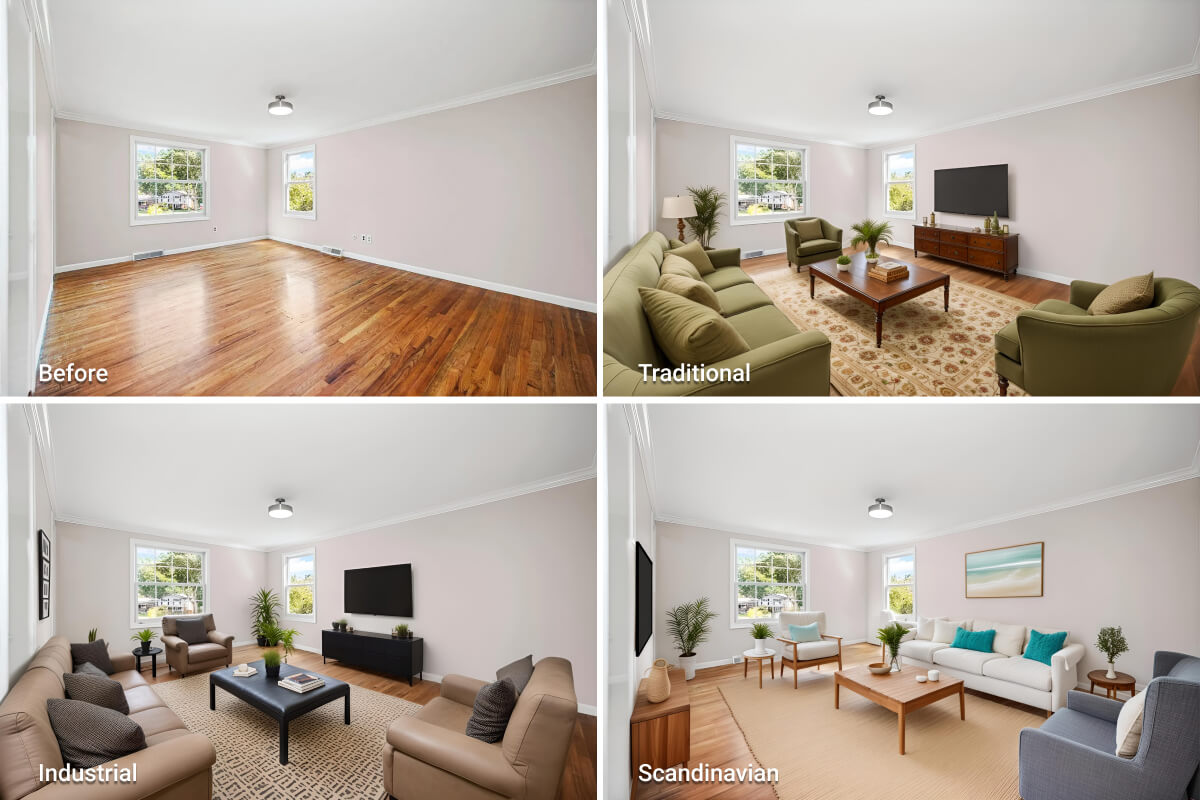
The debate is no longer just virtual staging vs. traditional staging; artificial intelligence has introduced a powerful third option.
AI virtual staging represents the next step in digital staging, eliminating delays and reducing the inconsistencies that come with human designers while still producing professional-quality results.
With a platform like AI HomeDesign, complete staging can be done in less than 30 seconds at prices starting from just $0.24 per photo, with unlimited free revisions.
Available 24/7, it removes the need to wait for business hours or designer availability. Agents can instantly test multiple furniture layouts, compare styles side by side, and scale effortlessly by staging dozens of properties at once. To learn more, you can read our guide to AI virtual staging.
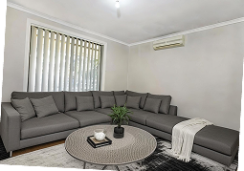
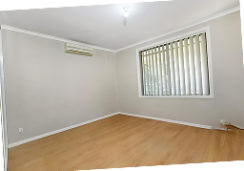
Virtual Staging vs. Traditional Staging: Which Is the Right Choice?
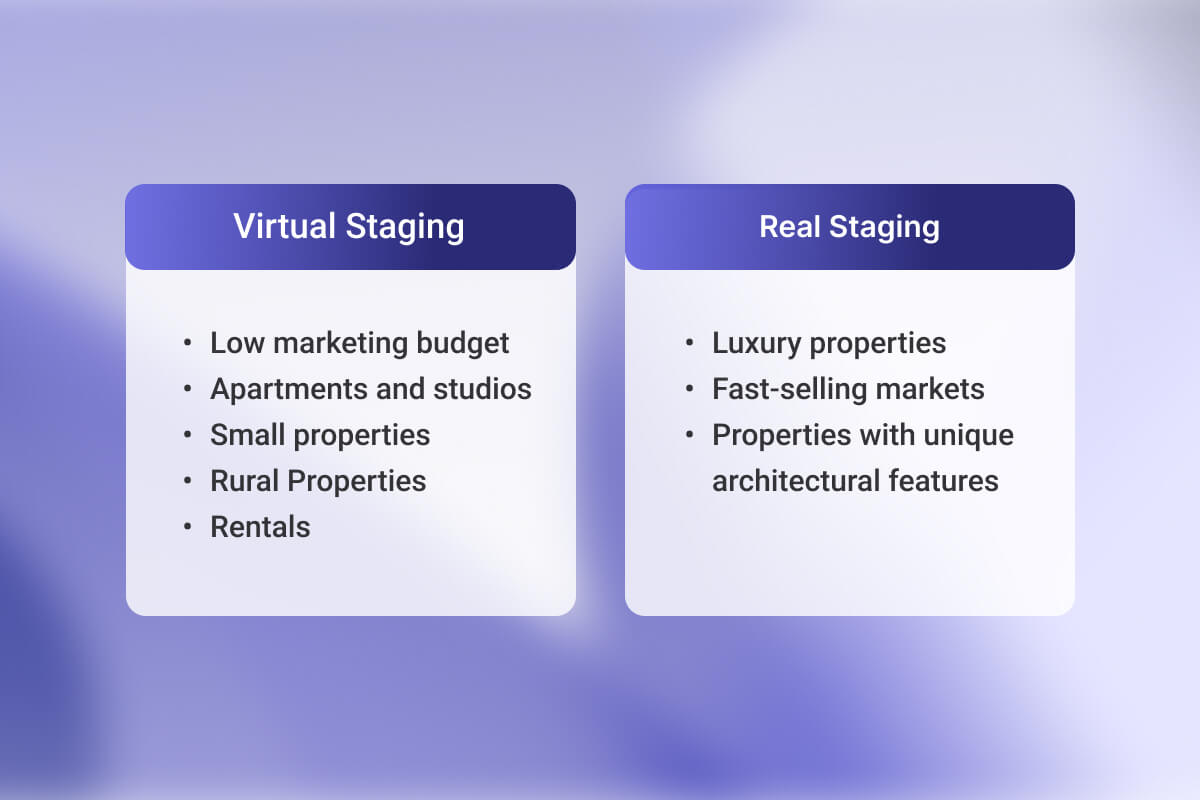
The right choice between virtual staging vs. traditional staging depends on your specific circumstances. Traditional staging works best for luxury properties, usually worth over $400,000 or more, where buyers expect physical experiences, and situations where your budget allows for $2,000+ monthly costs.
Similarly, in markets where properties take less than 60 days to sell, physical staging is the preferred choice.
Virtual staging is often the smarter option when budgets are limited, timelines are tight, or the property is a rental or mid-market home. It’s especially useful when listings need to go live within 24–48 hours or when targeting buyers who shop primarily online.
It also shines for testing different design styles to see what resonates, staging occupied or investment properties without disruption, and managing several listings at once with minimal effort.
Virtual Staging vs. Traditional Staging: The Alternative Approach
As a real estate agent, you don’t always have to restrict yourself to one choice. A hybrid approach often delivers the best results by combining both methods strategically.
You can use virtual staging for online marketing to attract initial interest and generate more showings, then employ selective traditional staging in key rooms like the living room or master bedroom for actual visits.
This approach makes the most of your marketing budget by using affordable virtual staging to reach a broad online audience, while providing the authentic experience buyers expect during property tours.
Many successful agents also use virtual staging to test which design styles attract more attention, then implement the winning approach with physical furniture for showings.
FAQs
How much does virtual staging cost compared to traditional staging?
Virtual staging typically costs $14–$75 per photo, while traditional staging ranges from $1,000–$3,500 per property. AI virtual staging can be as low as $0.24 per photo.
How long does each type of staging take?
Virtual staging delivers results in 24–48 hours, while a traditional staging setup takes 3–7 days minimum. AI virtual staging can be completed in under 30 seconds.
How does AI virtual staging differ from regular virtual staging?
AI virtual staging provides instant results (under 30 seconds), 24/7 availability, unlimited revisions, and consistent quality without waiting for human designers.


What types of properties work best with virtual staging?
Virtual staging works well for standard residential properties, condos, mid-market homes, rentals, and occupied properties. It’s also ideal for tight budgets and properties under $400,000.
When should I choose traditional staging over virtual staging?
Traditional staging is better for luxury properties, homes with unique architectural features, fast-selling markets, and when buyers expect physical experiences.
Can I use both virtual and traditional staging together?
Absolutely. A hybrid approach works well; use virtual staging for online marketing to attract interest, then employ selective traditional staging in important rooms for actual showings.
What are the main risks of traditional staging?
Traditional staging carries risks of damage to both furniture and employees, theft during showings, high ongoing rental costs if properties don’t sell quickly, and furniture potentially hiding property flaws.
Does virtual or traditional staging sell homes faster?
It depends on the market and property type. Traditional staging may help luxury homes sell faster in certain markets, while virtual staging helps attract more online viewers quickly, potentially leading to faster showings.


